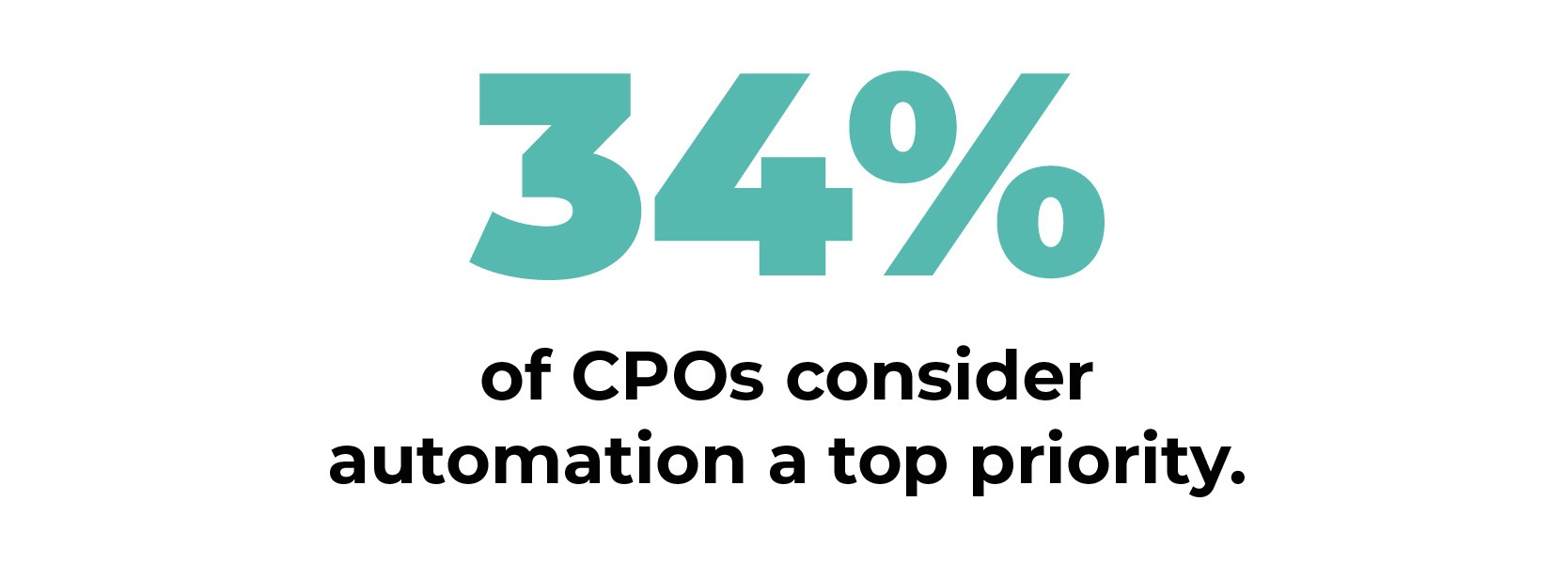Within procurement, digital transformation is rapidly changing the way practitioners manage their processes. Indeed, purpose-built procurement technology is now common in organizations of all sizes. As procurement teams embrace these tools, they build more efficient processes, deepen their technology expertise and gather data. All of this empowers them to advance to the next phase of the digital transformation journey — smart procurement.
Smart procurement as a concept is relatively new and often misunderstood. In this blog, we’ll explore the rise of smart procurement. We’ll start with the definition and benefits it offers. Then, we’ll list the most common procurement processes that are primed to change. Finally, we’ll share a few best practices to keep in mind.
- What is smart procurement?
- Procurement processes ready for automation
- Smart procurement best practices
What is smart procurement?
Smart procurement is the practice of using technology to automate routine procurement tasks. For example, smart procurement may leverage automation for contract management, vendor management, request management and more.
Many cloud-based procurement technology tools include automation features. Automation in software is powered by complex algorithms, artificial intelligence (AI), machine learning and natural language processing. While these tools can lighten workloads, they can’t operate without the input of procurement professionals.
What can procurement automation systems do?
- Gather data
- Analyze data
- Perform calculations
- Notify and communicate
- Manage workflows
Goals and benefits of smart procurement
The goal of smart procurement is to reduce the amount of human intervention required to perform routine or mundane tasks. By automating lower-value, repetitive elements of the procurement process, practitioners are free to focus on higher-value, strategic goals.
Ideally, automating this work yields a number of benefits including:
- Improved efficiency
- Reduced procurement costs
- Enhanced consistency
- Better data collection and analysis
- Faster, more confident decisions
- Improved stakeholder compliance
The value of smart procurement depends on how you use it. However, one thing is for sure, it will be increasingly important in the coming years. In fact, a recent survey from Ardent Partners indicates that 34 percent of chief procurement officers (CPOs) consider automation a top priority. Furthermore, many of these CPOs ranked automation a higher priority than cost savings. The study put it this way:
“With the rise of business process automation tools, cloud-based applications, mobile solutions, connected devices and Big Data permeating the modern business environment, more data is being created within procurement each year and organizations have an extraordinary opportunity (and responsibility) to capitalize on it.”

3 procurement processes ready for automation
While growing, smart procurement is still in early stages. Indeed, automation isn’t a magic button that will do everything for you. Truly, it can only assist with parts of your process — but by doing so it gives you time back to focus on more important things.
The key to success is starting with simple actions that add up to a lot of time. Consider your own processes. What tasks are most redundant and tedious?
For many procurement teams, RFP management, contract management and spend analysis are on the top of their list. Fortunately, there are already procurement automation systems that are easy to use and deliver value quickly.
1. Issuing RFXs
For many, managing requests for proposals (RFPs) and other RFXs involves using Word or spreadsheets to gather responses. To get a clear comparison, procurement managers may make a master RFP response document by manually copying and pasting each vendor response to each RFP question. It takes a tremendous amount of time and effort.
Fortunately, RFP management software removes ctrl+c and ctrl+v from the equation by automating and centralizing any RFX process. Scott Bosarge of entertainment giant AEG discusses the value of RFP automation in a recent case study saying,
“I can’t put an exact dollar number on it, but from the time it took us to create and launch an RFP, at a minimum, it’s reduced our level of effort by 50 percent. I would also say that the overall RFP quality and supplier experience has increased significantly.”
RFP automation capabilities:
- Create and gather stakeholder requirements questionnaires
- Save dynamic RFX templates and questions
- Create proactive vendor profiles
- Issue RFPs to vendors
- Track vendor proposal progress
- Assign and track stakeholder scoring
- Calculate RFP weighted scoring
2. Contract management
Procurement teams manage hundreds of contracts each year. And, each contract contains a ton of crucial information. Gathering, tracing and auditing that data manually is a herculean task. The solution? Contract management software.
Chances are good that you’ve interacted with contract management software already. However, you may not realize that these systems rely on automation including AI and natural language processing. Contract management solutions improve efficiency throughout the contract lifecycle.
Automation features in contract management software:
- Contract creation from templates
- Redline tracking and negotiation
- Metadata extraction
- Renewal and termination tracking
- Workflow management
- Advanced searching
- Contract categorization
3. Spend analysis
Without automation, effective spend analysis is nearly impossible. Collecting, categorizing and comparing data manually is incredibly inefficient, not to mention prone to error. In the time it takes to gather, analyze and report the information, it’s likely out of date.
Automated spend analysis gathers and aggregates data from multiple systems including enterprise resource planning (ERP) software, invoicing systems, expense software and more. Then, using machine learning, the software classifies spend. These systems enable near real-time reporting, data visualizations and strategic forecasting.
Automated spend analysis features:
- Category classification and insights
- Spending pattern identification
- Macro and micro trend analysis
- Internal and external records audit
Smart procurement best practices
Apply automation to your current process
Embracing smart procurement doesn’t mean creating new processes from scratch. Indeed, most procurement technology is designed to work with and complement existing workflows. By simply moving your existing process into a new system, you’ll help ensure quick implementation and adoption.
Start small and scale
Getting started with smart procurement doesn’t require a huge investment of money or time. Simply explore your process and identify the steps that require a lot of time but little expertise. Focus on these things first. Then, when you have a few tools working well, explore how you can expand your use.
Create clean data
Much of the automation that powers smart procurement depends on data. Consequently, without clean, accurate and consistent data, the effectiveness and reliability of automation decreases. Build good data habits by standardizing terminology, encouraging user accountability and regularly reviewing data for accuracy.
Prioritize integration
As you build your smart procurement technology stack, avoid gaps by verifying your systems can work together. Furthermore, explore how data is imported and exported from each system to ensure compatibility.
Highlight the value
When investing in procurement automation, it’s important to establish benchmarks before and after implementation. Review your process and record how long it takes to complete manually. Then, as you incorporate automation, make note of the time saved, how you used it strategically and the results of your efforts. Finally, share that information with your organization and stakeholders.
Smart procurement isn’t just about automating processes. It’s also about big-picture thinking, maximizing the value of a lean procurement team and reducing overall procurement costs. As time goes on, you can bet that automation will play a bigger role in the day-to-day work of procurement. So, why not start now?



